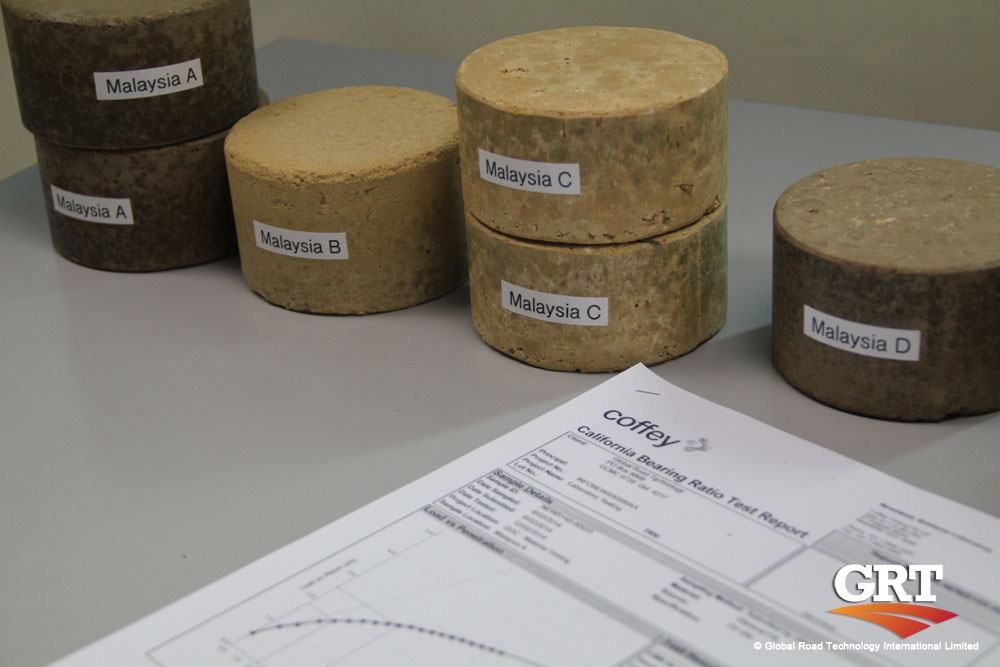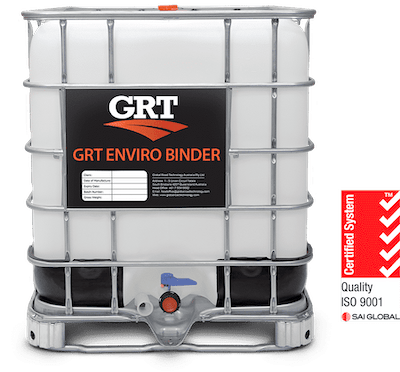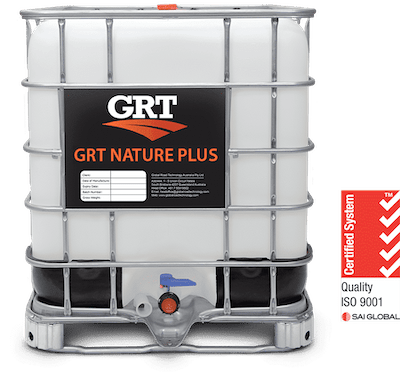Each soil type has its own set of different characteristics. Digging deeper into any soil, reveals layers, or horizons. A soil horizon is a layer parallel to the soil surface whose physical, chemical and biological characteristics differ from the layers above and beneath. A graphic of typical soil horizons is shown here. These are the soil layers from top to bottom:
- O Horizon.
- A Horizon.
- E Horizon.
- B Horizon.
- C Horizon.
- R Horizon.
These horizons when put together, form a soil profile. Each soil profile depicts the timeline of a soil. Horizons are defined in many cases by obvious physical features, mainly color and texture. Soils with a history of human interference, for instance through major earthworks or regular deep ploughing, may lack distinct horizons completely.
In this article, we discuss different soil layers, the importance of soil, the role of soil layers in vegetative growth, alternative soil layer classifications and finalize with a look into GRT soil management products and key product benefits.
What are the different soil layers?
O Horizon (humus or organic): the top, organic layer of soil, made up mostly of leaf litter and humus. The O horizon is thin in some soils, thick in others, and not present at all in others.
A Horizon (topsoil): the layer called the topsoil, is found below the O horizon and above the E horizon. Seeds germinate and plant roots grow in this dark colored layer. It is made up of humus mixed with mineral particles. A good material for plants and other organisms to live.
E Horizon (eluviated): this eluviation or leaching layer is light in color. This layer is beneath the A horizon and above the B horizon. It is made up mostly of clay, minerals, sand, silt and organic matter, leaving a concentration of sand and silt particles of quartz or other resistant materials. It is missing in some soils but often found in older soils and forest soils.
B Horizon (subsoil): rich in minerals that leached. Also called the subsoil this layer is beneath the E horizon and above the C horizon. A mix of accumulated organic matter and minerals gives this horizon its brown coloring which also be attributed to accumulation of clay and rusty-colored soil from iron oxidation. It contains clay and mineral deposits like iron, aluminium oxides and calcium carbonate that it receives from layers above it when mineralized water drips from the soil above via illuviation.
C Horizon (parental material): also called regolith, the layer beneath the B horizon and above the R horizon. It consists of slightly broken up bedrock. It is made up of original parent material which has been continually altered over thousands of years due to weather events and glacization. Plant roots do not penetrate this layer, little to no organic material is found in this layer, only minerals.
R Horizon (bedrock): the unweathered rock layer that is beneath all the other layers. Bedrock is made up of igneous, sedimentary, or metamorphic rocks such as granite, basalt, quartzite, limestone or sandstone that forms the parent material for some soils, only if the bed is close enough to the surface to weather. This is not soil and is located under the C horizon.
What is the importance of soil?
Soil is the top layer of the earth’s crust. It is the medium in which trees spread their roots and grow hence it is essential to the success of vegetative growth. Soil is comprised of finely ground rock particles and materials such as sand, silt, clay, and gravel; with voids between particles containing water and air. Sandy soils have very large particles that allow roots, air, and water to move freely. Whereas clay particles are small and packed together tightly, offering little room for nutrients and root growth. Some nutrients in soil consist of magnesium, calcium, sulphur and range of other trace elements. In addition to mineral composition, organic matter plays a role in soil fertility. Organic matter improves sandy soil by retaining water levels and alters clay soil by making it more permeable to water, air and roots. Nutrient uptake in the soil is achieved by cation exchange. Fibrous roots pump hydrogen ions into the soil which displaces cations attached to negatively charged particles of the soil, making cations available for uptake by roots.
What is the role of soil layers in vegetative growth?
The vertically classified soil layers play both similar and different roles in vegetative growth. Each soil layer has a contribution to the overall vegetative growth and establishment. Each soil horizon has the following contribution to vegetative growth:
- O Horizon – provides decaying organic matter for vegetative growth.
- A Horizon – provides layer for seed germination and root establishment.
- E Horizon – provides layer for roots to further establish.
- B Horizon – root establishment subject to oxygen levels and drainage.
- C Horizon – main source of soil which replenishes B, E, A and O horizons.
- R Horizon – source of the rock material that forms the parent material.
Alternative soil layer classifications – soil order classification from the USA.
There are other soil layer classifications which incorporate the soil layers approach but are much more comprehensive. The United States Comprehensive Soil Classification System uses the following soil order classifications:
Alfisols: these soils develop in areas with 150 – 1,270 mm of rainfall each year. Most develop under forests and clay accumulates in the B-horizon.
Andisols: these are volcanic soils, which are deep and have a light texture. They contain iron and aluminium compounds.
Ardisols: these are desert soils with little or no organic content but significant amounts of calcium. They are often affected by salinization.
Entisols: these are soils with little or no horizon development, which are often found in recent floodplains, under recent volcanic ash and as wind-blown sand.
Histosols: these are organic soils, found in bogs, swaps and wetlands.
Inceptisols: these are young soils in which the horizons are starting to develop.
Mollisols: these soils form mainly under grassland. They are dark colored, with upper horizons rich in organic matter.
Oxisols: these are infertile, acidic, deeply weathered soils which contain clays of iron and aluminium oxides.
Sodosols: these are sandy soils which develop under forests particularly coniferous forest. They are acidic and have accumulations of organic matter and iron and aluminium oxides in the B-horizon.
Vertisols: these are clay soils that expand when wet and crack when dry. They develop in climates with marked wet and dry seasons.
GRT soil management products and key product benefits
Product: GRT Enviro Binder
Key product benefits:
- Non-toxic and environmentally friendly product.
- Immediately effective once applied.
- Binds soil preventing impact and sheet erosion on any exposed soil area.
- Support seed and vegetation growth.
- Minimal soil preparation for application of product.
- Cost effective results.
- Safe installation.
- Waterproof product.
Product: GRT Nature Plus
Key product benefits:
- Immediately effective upon application by binding directly to soil.
- Accelerate germination.
- Reduces impact erosion, sheet erosion, topsoil loss and sediment.
- Cost effective when to hydro-mulching and hydro-seeding revegetation.
- Minimizes wash away of seed.
- Aids fertiliser retention around root zone.
- More available fertiliser for plant uptake.
- Environmentally friendly.
In conclusion
Contact our expert team at Global Road Technology for information about our soil management solutions. Are you in need of soil biotic amendments in your soil profile? Improve your O, A, E and B horizons by speaking to Daniel Grundy. He is ready to assist you in your upcoming rehabilitation, revegetation, erosion control or sediment control projects.
Your feedback is important to us. If you enjoyed reading this Global Road Technology industry update and found it informative, please let us know by leaving a REVIEW.
REFERENCES
Know your land… know your #soil. Retrieved 09/09/21.
Soil classification. Retrieved 09/09/21.
The Soil Requirements of Street Trees. Retrieved 09/09/21.
Troy Adams
Troy Adams is the Managing Director of Global Road Technology (GRT) Specialising in Engineered Solutions for Dust Suppression, Erosion Control, Soil Stabilisation and Water Management. A pioneering, socially conscious Australian entrepreneur, Troy Adams is passionate about health and safety and providing innovative solutions that are cost-effective to the mining industry, governments and infrastructure sectors. Troy is also a tech investor, director of companies like Crossware, Boost, Hakkasan, Novikov and more.




